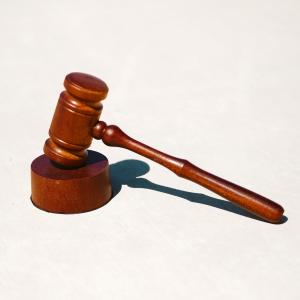The Lightning Network (LN) is a second-layer protocol built on top of the Bitcoin blockchain that enables faster and cheaper transactions. One of the crucial components of LN is the Lightning invoice, which serves as a payment request for settling transactions over the network. In this article, we will look at what a Lightning invoice is, its structure, differences between it and other addresses, how to obtain one, and explore some pros and cons.
What is a Lightning Invoice?
A Lightning Network Invoice is a payment request used on the Lightning Network, a second-layer protocol on top of the Bitcoin blockchain that enables faster and cheaper transactions. Lightning Invoices are essential for users who want to send or receive payments using the Lightning Network.
Example of a Lightning Invoice
A typical Lightning Invoice might look something like this:
lnbc1500n1psjf2fppp5rfvu6p8rwdys8g3scwpjslgtsc7mv3tpgdp0dcjps3rdz3tjdz8qqdpggmxu6xz9vfuxqar5yypqay7r5yypuapqmqrzjq9pufp6xj76h7vc7u5r6ucjv2mpyc7xfvvsc8xxdjqw3erq8sqqqq9qq9q9qy9qsqqyzx0qg9wph76zy9arh8ptxuh5gslzyzqtn3dsv0g0ak6ct4vse9zdh85spz8h6lcnm7ht2lj7krz52krzd8l48gsp22y2lgq33js5pwkqt50v9pm6cf2y8g08hwgzm75v67zgvcaw48gyp6lqpc93usw
Information contained in a Lightning Invoice include various pieces of information encoded into a string of letters and numbers:
- Prefix (lnbc): Indicates the network (ln for Lightning Network) and currency (bc for Bitcoin).
- Amount (1500n): Represents the amount requested, in this case, 1,500 satoshis.
- Payment Hash: A unique identifier for the payment.
- Timestamp: The time the invoice was created.
- Routing Information: Contains details for finding a path to the payment destination.
- Description: The purpose or label for the payment.
- Signature: Ensures the invoice was generated by the recipient’s node.
Zero-Amount Lightning Invoice
A zero-amount Lightning Invoice is a special type of invoice that does not specify the amount to be paid. The payer decides the amount when making the payment. This is useful for donations or tipping, where the recipient wants to give the sender flexibility in the payment amount.
Differences Between Lightning Invoice and Lightning Address
A Lightning Invoice is a payment request for a specific amount and usually has an expiration time. It is generated by the recipient and provided to the sender to facilitate the transaction.
A Lightning Address is a static identifier, similar to an email address, that allows anyone to send funds to the recipient without the need for a new invoice each time. It simplifies the process of receiving payments, but is less flexible in terms of setting specific amounts or expiration times.
Dig deeper: What’s a Lightning Address?
Difference Between Lightning Invoice and Bitcoin Address
As explained, Lightning Invoice is a payment request on the Lightning Network with a specific amount and expiration time.
A Bitcoin address is a static alphanumeric string that allows users to send Bitcoin on the main Bitcoin blockchain. It does not have an expiration date and can be reused, but transactions are slower and more expensive compared to the Lightning Network. While both are used for receiving payments, they serve different purposes and are not interchangeable.
Dig deeper: What’s Bitcoin Address?
How to Get a Lightning Invoice
To generate a Lightning Invoice, you need a Lightning wallet. Here’s how to get one:
- Choose a Lightning Wallet: Download and install a Lightning wallet like Phoenix, Aqua, or Electrum.
- Fund Your Wallet: If necessary, deposit Bitcoin into your wallet to open a Lightning channel.
- Generate Invoice: In your wallet, select the option to receive payment. Enter the amount (if not using a zero-amount invoice) and generate the invoice. Share the invoice with the payer.
Do Lightning Invoices Expire?
Yes, Lightning Invoices have an expiration time, typically set by the recipient. The default expiration time for a Lightining wallet like Muun is 24 hours. After the expiration time, the invoice becomes invalid, and the payment cannot be completed.
Can You Reuse a Lightning Invoice?
No, Lightning Invoices are meant for single-use only. Once the invoice has been paid, it cannot be reused. Attempting to pay an already-settled invoice will result in an error. This ensures the security and reliability of the Lightning Network.
Pros Lightning Invoices
- Instant Transactions: Payments are completed almost instantly.
- Low Fees: Transaction fees are minimal, making microtransactions feasible.
- Enhanced Privacy: Since transactions are off-chain, they offer greater privacy.
Cons of Lightning Invoices
- Complexity: Setting up and managing Lightning payments can be more complex for beginners.
- Channel Liquidity: Payments can fail if there isn’t enough liquidity in the channel.
- Single Use: Invoices can only be used once, requiring a new invoice for each payment.
- Limitations: Limited adoption and interoperability with non-Lightning wallets.
Lightning Invoice: Faster, Cheaper Transactions
Lightning Invoices are a key element of the Lightning Network, facilitating faster and cheaper Bitcoin transactions. Knowing how to create, share, and manage these payment requests is essential to fully leverage the advantages of this technology. As the Lightning Network gains wider adoption, mastering the use of Lightning invoices will become increasingly important. However, there are some drawbacks to consider. Lightning invoices are time-sensitive, meaning they typically expire within a certain period, which can be inconvenient for users needing more flexibility.



























